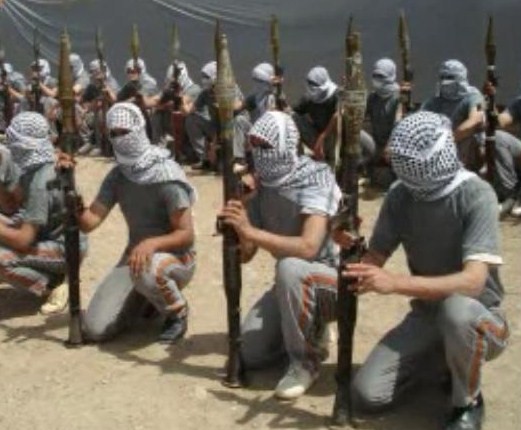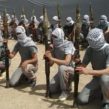
The Insurgent Rationale in Iraq
Publication: Terrorism Monitor Volume: 8 Issue: 6
By:

The string of high-profile bombings that followed the withdrawal of U.S. combat forces from Iraqi cities on June 30, 2009 exposed not only Iraqi security shortcomings, but also the continued effectiveness of the insurgents to carry out demanding operations. These types of operations suggest the militants are choosing high-profile terrorism as a strategy for undermining counterinsurgency efforts, targeting the confidence and trust of the population in the government as a way of ensuring a climate of uncertainty, feeble governance, and organizational survival.
A new security challenge emerged when U.S. combat forces exited Iraqi cities in accordance with the Status of Forces Agreement arranged by the outgoing Bush administration. Without U.S. combat forces patrolling side-by-side with Iraqi soldiers in urban areas, deterrence-by-denial becomes less credible, bestowing to insurgents a new rational basis for exploiting a weaker security apparatus.
Sunni insurgent groups and Shi’a militias invested much time and resources to gain and hold territory during the height of the insurgency (2005-2007), but militant strongholds were uprooted over the course of a population-centric counterinsurgency carried out by U.S. and Iraqi forces. The loss of territorial possession has forced a smarter, albeit less resourceful, insurgency. It has evolved from being centered on a costly and preoccupying defensive posture to a purely offensive and asymmetric terrorist campaign.
By building confidence and trust between the population and protection forces, counterinsurgency fosters a rational framework for locals to cooperate and provide intelligence without fearing retribution. This public engagement forces upon militants a higher demand for secrecy in avoiding exposure, likely leading to a greater inclination towards political assassination operations.
This was the case on February 7, when gunmen with silencers in the Raas al-Jada area of western Mosul assassinated Dr. Soha Abdullah Jarallah – a female political candidate and part of former Prime Minister Ayad Allawi’s al-Iraqiya coalition (Aswat al-Iraq, February 7). Preceding the December 30, 2009 twin bombings in al-Anbar that killed 30, wounded over 100 and severed the hand of Governor Qassim Mohammed Abid al-Fahdawi, a series of nearly 40 assassination attempts targeted tribal, religious, security, and political figures in the province.
With the increased need for secrecy coupled with limited resources, insurgent groups are likely to better utilize their force-multiplier advantages and existing assets, while adopting cautious operational assessments. The three highly coordinated, mass-casualty Baghdad bombings since the June 30, 2009 withdrawal (occurring on August 19, 2009; October 25, 2009; and December 8, 2009) are a testament that the adversary recognizes the effectiveness of infrequent high-profile attacks on government symbols in influencing the minds of Iraqis.
In addition, with a more capable and visible central government in Baghdad, the incentive for insurgent groups to pool resources and cooperate with one another has increased. An example may be found in the Jaysh Rijal al-Tariqah al-Naqshabandiyah (JRTN), a militant Sufi movement with ties to Ba’athist leaders including Izzat Ibrahim al-Douri. The movement is known to have formed new ties to other Sunni insurgent groups (see Terrorism Focus, February 21, 2007; July 28, 2008). In November 2009, U.S. General Raymond Odierno suggested that al-Qaeda in Iraq was also collaborating with Ba’athist elements, recognizing that AQI “has now become more and more dominated by Iraqi citizens” rather than foreign jihadis (Reuters, November 18, 2009).
Because no openly defined militant stronghold exists, the battleground for combating the insurgency has become undefined as well. Insurgents can now decide when and where to become active members of the resistance, rationally choosing to fight—or not fight—depending upon which side is advantaged. This was noticeable during Prime Minister Nuri al-Maliki’s Mosul offensive in May 2008, codenamed Za’eer al-Assad (Lion’s Roar), which disappointed some Iraqi commanders who were expecting a hardened resistance amongst the militants.
Instead of engaging armies in guerilla warfare, the insurgents favor exploiting areas of political and ethnic sensitivity with the intention of inflaming inter-ethnic tensions. Their assassination campaign against the Sahwa (Awakening) Movement coerces fearful and disgruntled Sunnis to opt out of the fight against insurgents, while the Shi’a-led government continues to arrest many senior Sahwa officials on the grounds of supporting terrorism. On January 23, all 13,000 Sahwa fighters in Diyala province left their posts in protest of Baghdad’s harassment campaign against them (Aswat al-Iraq, January 23).
Insurgents are also fueling dangerous suspicions between Sunni Arabs and Kurds by exploiting the debate on the “disputed territories” in Ninawa province, compounding the rising tensions between the Sunni Arab provincial governor Atheel al-Nujaifi and the Kurdish Regional Government (KRG) (Aswat al-Iraq, August 14, 2009; Niqash, February 24, 2009; Kurdish Globe, February 6). Tensions have risen to the verge of armed conflict on multiple occasions, only to be defused by the intervention of U.S. combat forces.
The debate over Article 140 – a constitutional provision that aims to settle the dispute over territorial ownership between the KRG and the national government – remains unresolved and a potential rationale for a second civil war. In addition, the first post-Saddam census has been delayed until after the scheduled withdrawal of all U.S. combat forces in August 2010 (Aswat al-Iraq, August 31, 2009). Along with the March 2010 parliamentary election, these political proceedings offer real venues for exploitation and destabilization by insurgents.
The objectives of the insurgent groups have narrowed and become more realistic because they have ceased to be territorially defined. Strategic and tactical assessments are no longer about gaining territory, but rather to complicate counterinsurgency activities by instilling in the public a sense of uncertainty, suspicion, insecurity, and dwindling confidence in the Iraq government. The lack of a territorial baseline has now forced militants to think prudently about how to effectively confront their adversary, as the power to coerce rather than control becomes the standard for operational planning.





